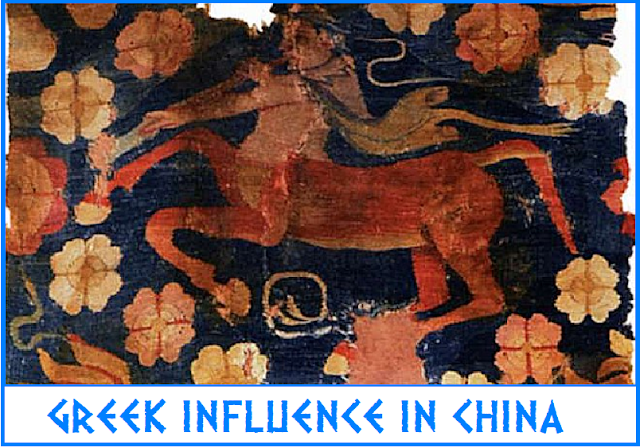The Sampul Τapestry is a woolen wall-hanging that was found in Sampul,Xinjiang, near Khotan, in the Tarim Basin inside a 3rd-2nd century BCE mass grave.
The tapestry depicts a Greek soldier and a Centaur. It is probably a Greek work from Central Asia (Greco-Bactria) and uses more than 24 threads of different colors in a typical Western technique.
The soldier wears a tunic with rosette motifs. His headband could be a diadem, the symbol of kingship in the Hellenistic world, as represented on Macedonian and other Greek coins. The presence of the Centaur as a motif, a typical element of Greek mythology, floral motifs, and the realistic rendering further reinforce the identification of the soldier as Greek. The tapestry was, curiously, fashioned into a pair of trousers, indicating that it may have been used as a decorative trophy.
The existence of this tapestry tends to suggest that contacts between the Hellenistic kingdoms of Central Asia and the Tarim Basin, at the edge of the Chinese world occurred from around the 3rd century BCE.
Source: Pictures from Ancient History
The tapestry depicts a Greek soldier and a Centaur. It is probably a Greek work from Central Asia (Greco-Bactria) and uses more than 24 threads of different colors in a typical Western technique.
The soldier wears a tunic with rosette motifs. His headband could be a diadem, the symbol of kingship in the Hellenistic world, as represented on Macedonian and other Greek coins. The presence of the Centaur as a motif, a typical element of Greek mythology, floral motifs, and the realistic rendering further reinforce the identification of the soldier as Greek. The tapestry was, curiously, fashioned into a pair of trousers, indicating that it may have been used as a decorative trophy.
The existence of this tapestry tends to suggest that contacts between the Hellenistic kingdoms of Central Asia and the Tarim Basin, at the edge of the Chinese world occurred from around the 3rd century BCE.
Source: Pictures from Ancient History














No comments:
Post a Comment